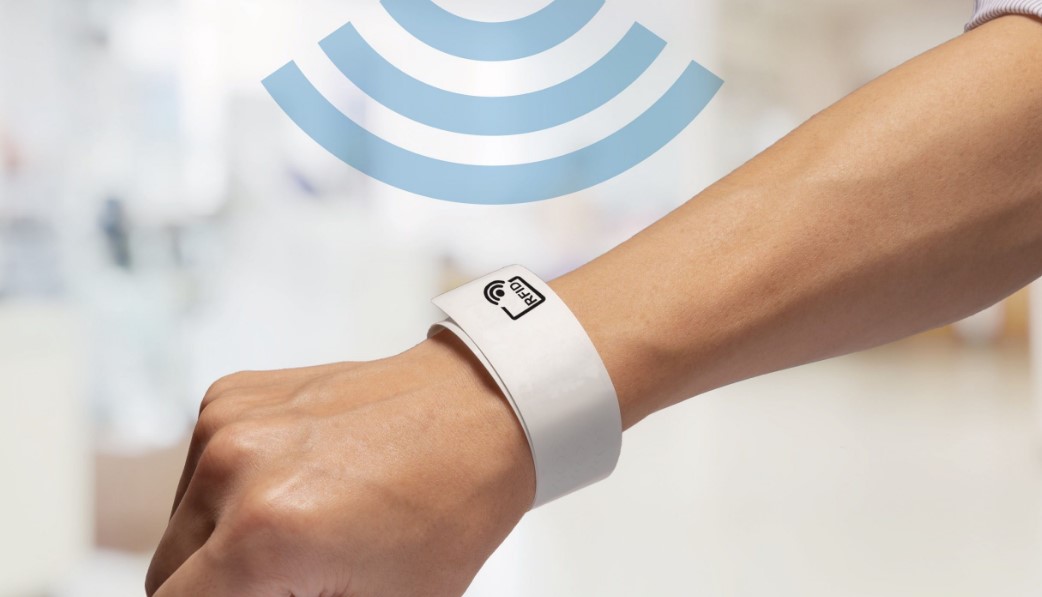
RFID wristbands have emerged as a powerful solution for identifying, authenticating and managing guests at events and facilities of all kinds. But did you know there are actually several different varieties of these convenient bands? In this blog, we'll explore the various types of RFID wristbands, their unique features, and ideal use cases.
Undoubtedly one of the most popular and versatile options, silicone RFID wristbands are made from durable, waterproof silicone rubber. The soft, stretchy material makes them extremely comfortable to wear for long periods. Silicone bands can expand to fit most wrist sizes and are virtually impossible to tear or break. Their flexibility also allows for designs and logos to be prominently imprinted via silk screening or embossing for brand promotion. Reusable and able to withstand moisture and sunlight exposure, silicone RFID wristbands are great for water parks, swimming pools, gyms, and outdoor events.
For events like music festivals where memorabilia is valued, fabric wristbands allow for vibrant full-color printing that turns the band itself into stylish merch. The woven fabric material provides a soft textile feel and surface area to reproduce intricate graphics and patterns. Fabric RFID bands can essentially function as fashionable accessories that identify paid guests. The colorful designs and ability to print sponsors' logos maximizes branding opportunities. While not as durable as silicone, fabric wristbands are still tear and water-resistant.
When you need a simple, low-cost solution for one-time use, disposable paper RFID wristbands come in handy. These basic bands consist of Tyvek or polymer paper material with an integrated RFID inlay. They have an adhesive closure and are 100% waterproof, yet lightweight and economical enough to discard after the event. Basic details like dates, barcodes or ID numbers can be printed directly on the paper surface. Tyvek and polymer paper are also very difficult to replicate or counterfeit.
Some RFID wristbands are designed specifically to work with direct thermal printers for on-site, on-demand printing capabilities. Both polymer paper and thinner plastic thermal wristband options allow for customized details like names, credentials, barcodes to be printed directly on the band as guests check in. This added flexibility for printing variable data in real-time is useful for events like conferences or concerts where buyer information may change up until the last minute.
For basic identification purposes where durability is needed for short-term use, plastic RFID wristbands provide an affordable solution. Similar in style to hospital ID bands, these lightweight plastic bands are waterproof yet more rigid than silicone or fabric. They often come in different color options and adjustable sleeve sizes to allow for a snug, secure fit. The plastic casing also helps protect the RFID inlay from potential damage.
On the higher end, premium rigid plastic or vinyl RFID wristbands offer impressive durability and showcase full-color printing capabilities on a curved surface. The thick rigid plastic or vinyl material ensures these bands can withstand extensive wear and tear, while the glossy surface allows for high-resolution designs, photos and branding to be vibrantly reproduced using dye-sublimation printing. These upscale wristbands have a flatter, wider shape that maximizes printable real estate.
For enhanced security and controlled access, watch-style RFID wristbands are designed to be securely worn like a watchband. Made of stretchy, tamper-resistant silicone material, they form a snug, tight fit on the wrist to prevent removing and transferring the band. This deters counterfeit access and friend-sharing. Watch-style RFID bands are an ideal option for workplace and facility access control.
From budget-friendly paper and plastic bands for general admission to fashionable fabric merchandise to heavy-duty vinyl for staff and VIPs, there is an RFID wristband to meet every need and budget. Their ability to identify wearers, grant access, facilitate payments, and collect data in a seamless contactless manner is revolutionizing guest experiences across industries.